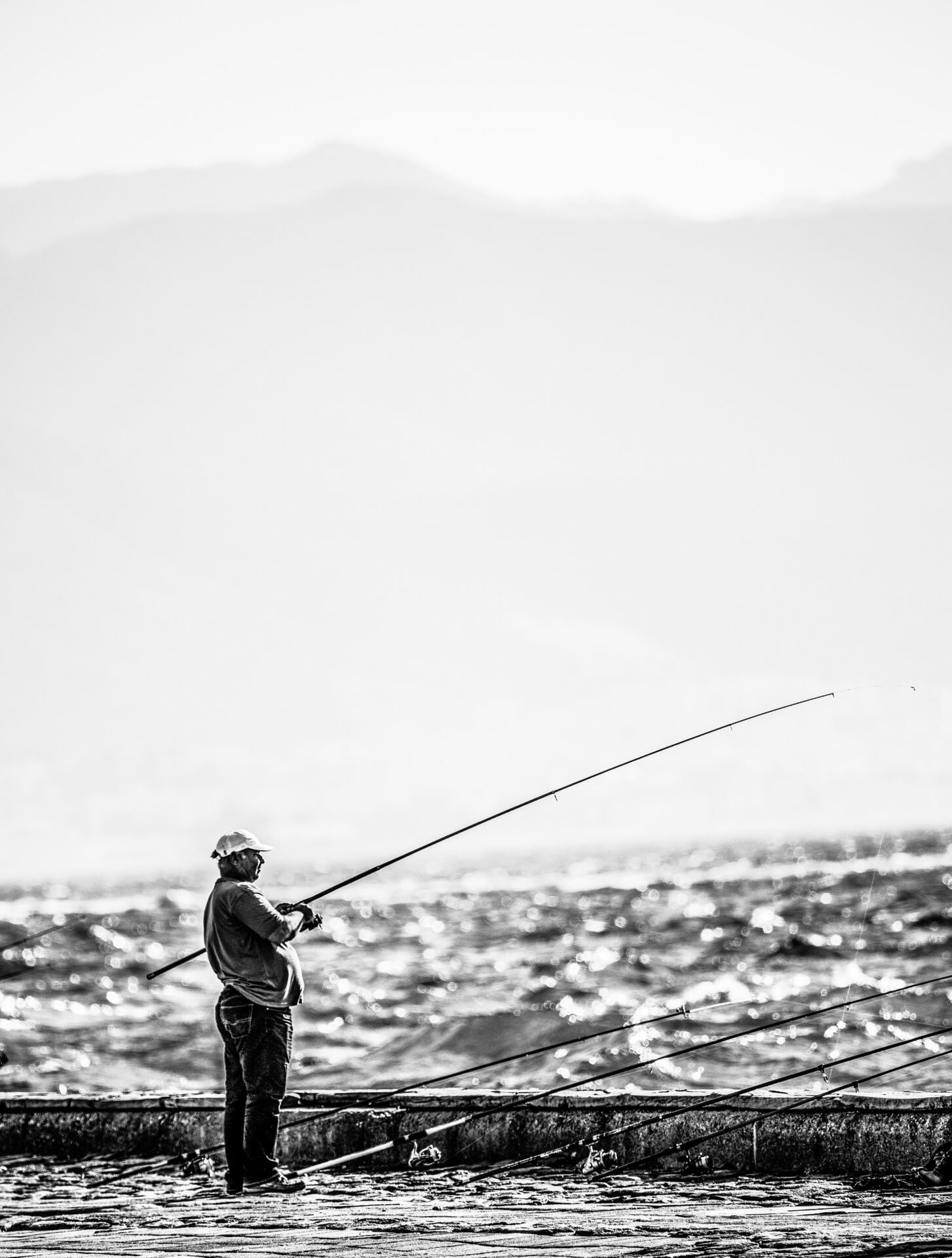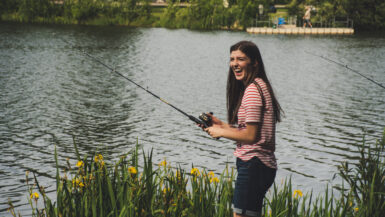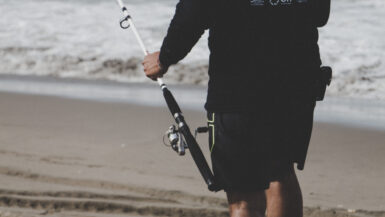If you are an angler looking to spend a day of freshwater fishing, then you know the importance of having the right equipment. One of the most important pieces of gear is the fishing line. While choosing the right line for your fishing needs may not seem like a big deal, it can make all the difference when it comes to having a successful day out on the lake or river. In this article, we will discuss how to choose the right fishing line for freshwater fishing, including the different types of lines available and the considerations to take into account when making your selection.
Types of Fishing Line
Monofilament fishing line is a single, continuous, and unbraided filament of synthetic material that is used for a variety of fishing applications. The most common use for monofilament line is for freshwater fishing, because it is strong and abrasion-resistant. Monofilament line is also a favorite choice for trolling, as it cuts through the water with ease, allowing the lure to reach deeper depths. The downside to monofilament line is that it is more visible than other types of fishing line, making it easier for fish to spot.
Fluorocarbon Fishing Line
Fluorocarbon fishing line is made up of tiny strands of fluorocarbon material that have been braided together. Fluorocarbon fishing line is highly abrasion-resistant and is less visible to fish than monofilament, making it a great choice for stealthy fishing. It is also much more sensitive than monofilament line and will transmit bites more accurately. However, the downside is that it is more expensive than monofilament line and is not as flexible.
Braided Fishing Line
Braided fishing line is constructed from a combination of woven fibers, which makes it extremely strong. Braided lines are favored by anglers who need a fishing line that can withstand a lot of pressure and can handle large catches. It is also much more durable than other types of fishing line and is preferred by anglers who fish in rocky areas. The downside to braided line is that it tends to be bulkier than other fishing lines, making it more visible to fish.
In Conclusion
When it comes to choosing the right fishing line for freshwater fishing, there are several factors to consider before making a purchase. Different types of fishing line have different properties, so it is important to do your research and decide which type of fishing line is best suited for your needs. Monofilament, fluorocarbon, and braided fishing line all have their own benefits and drawbacks, so it is important to weigh the pros and cons of each type of fishing line before making a purchase.
Factors to Consider
When selecting the right fishing line for freshwater fishing, the material is an important factor to consider. Popular line materials include monofilament, fluorocarbon, and braided lines. Monofilament lines are durable, good for throwing top-water lures, and are the most budget-friendly option. Fluorocarbon lines are great for freshwater fishing, offering superior sinking capabilities and are virtually invisible, making them great for stealthy fishing. Braided lines provide exceptional strength and sensitivity and are great for fishing with heavier baits and jigs.
Line Strength
Another important factor to consider when choosing the right fishing line is the line strength. This is often represented in a number that indicates the maximum test strength it can handle. Higher numbered tests indicate higher strength and can handle more pressure. Heavier lures, bigger baits, and larger fish require a higher test strength line. For most freshwater fishing, a line with a test strength between four and twelve pounds is appropriate.
Visibility
The visibility of the line is an important factor to consider when choosing the right fishing line for freshwater fishing. Visibility refers to how visible the line is in the water. Some lines are designed to be less visible and can be helpful when fishing in clear water with wary fish. Other lines are designed to be highly visible and these are great for locating bites and strikes. The color of the line will also be a factor in its visibility, with darker colors being less visible in the water.
Stretchability
When selecting the right fishing line for freshwater fishing, the stretchability of the line is another factor to consider. Lines with higher stretchability offer more shock absorption, which can be helpful when fighting larger fish. It can also increase bite detection as it takes more pressure to feel the bite. However, if too much stretch is present, it can lead to issues with knots and reduced casting distances.
Price
Finally, the price of the fishing line should be considered when choosing the right line. Different materials, weights, and lengths will typically have different prices. Monofilament lines are typically the most budget friendly while specialized lines, like fluorocarbon, braided, and low-visibility lines, will cost more. Even so, when it comes to choosing the right fishing line for freshwater fishing, it is important to remember that price should not be the only factor when making a selection.
Line Strength
Fishing line has a major impact on the success of fishing trips, particularly for those fishing in freshwater. Monofilament line is the most popular type of fishing line used in freshwater fishing, but it’s important to understand the different strengths and materials available when selecting the right line for your needs.
Monofilament line is made of a single strand of material, which can be formulated in a variety of ways. The material can give the line a range of characteristics, depending on the formulation, such as increased strength, reduced visibility, buoyancy, abrasion resistance, and more.
Factors to Consider When Choosing Monofilament Line
When deciding what line to purchase, there are several factors to consider. First, anglers should consider the type of fish they are targeting, since line breaking strength is directly related to fish size and the equipment being used. The line breaking strength should also be appropriate for the type of water being fished as well as the type of lure or bait being used.
In addition to strength, anglers should also consider the visibility of the line. Some lines are designed to be more visible in the water, while others are designed to blend in with the water and be almost imperceptible to the fish.
Types of Monofilament Fishing Line
Monofilament line comes in a variety of weights and breaking strengths. The weight of the line is determined by its diameter, while the breaking strength is determined by its material composition. The most commonly available monofilament line is known as “standard” monofilament line. This type of line is made of nylon and has a breaking strength of 10 to 25 pounds.
However, there are also other types of monofilament line, including “copolymer” and “fluorocarbon” lines. Copolymer lines are similar to standard monofilament lines, but are made from a combination of nylon and other materials to increase the lines strength and abrasion resistance. Fluorocarbon lines are more expensive and are made from a material that is virtually invisible in the water.
Durability of Monofilament Line
The breaking strength of monofilament line is determined by the material used to create it. Standard monofilament lines are generally more durable than either copolymer or fluorocarbon lines, but they may also stretch more when they come under pressure. Copolymer and fluorocarbon lines are more resistant to stretching, but they are more vulnerable to abrasions and UV damage than standard monofilament lines.
Anglers should consider all of these factors when choosing the right line for their freshwater fishing needs. Knowing the features and benefits of each line can help anglers select the line that is best suited for their needs.
Spooling the Line
When it comes to freshwater fishing, the type of line you choose for your reel is just as important as the rod and reel you use. The right line can help you catch more fish and have a better time doing it. Here’s an overview on how to choose the right fishing line and properly spool the line onto your reel.
Choosing the Right Type of Fishing Line
There are many different types of fishing line available, so it is important to have an idea of what type of fish you will be going after and the type of water environment you will be fishing in. Different types of fishing lines have different properties; they can be strong or weak depending on the type and the casting distance. The recommended line strength for freshwater fishing is 4-8 pounds.
Spooling Your Reel
Once you have chosen the right type of line for your reel, you’ll need to spool it on the reel. To properly spool the line on the reel, tie the line to the spool with an arbor knot. Alternatively, you can use a double uni knot for a more secure hold. Once the line is attached to the spool, start winding the line onto the reel. Wind the line until it is evenly distributed around the spool. Depending on the type of reel, you may need to fill the line to a certain level or until it is filled to the point of where you desire.
Ensuring Line Tension on the Reel
Once the line has been spooled onto the reel, it is important to make sure that there is tension on the line. If the line is too loose, it can slip off the reel and lead to an ineffective cast. The best way to check the tension is to hold the reel in one hand and the spool in the other. If the line is tight, it shouldn’t move when you try to spin the reel. If the line is too loose, adjust the tension by loosening or tightening the drag knob.
Reel Maintenance
Finally, regular maintenance of the reel is important for making sure that your line is always at the proper tension and can provide optimal performance. After every fishing trip, make sure to wipe the reel down with a damp cloth, as well as lube any bearings or moving parts. This will help keep your reel in top condition and your line spooled nicely.
By following these tips, you can make sure that your reel is properly spooled with the right line. With the right line and reel setup, you’ll be ready to tackle any freshwater fishing adventure.
Testing the Line
Freshwater fishing can range from small streams to large lakes, and choosing the right fishing line for freshwater is essential for the best fishing experience. Whether the choice is between monofilament, braid, fluorocarbon or a combination, the angler must consider what type of fishing they are doing, what kind of fish they are targeting and what reel they are using.
Types of Fishing Lines for Freshwater Fishing
Monofilament fishing line is the most common type of fishing line used in freshwater fishing. It is made of a single strand of nylon, so it is easy to cast, can be used in a wide range of water depths, and is generally reasonably priced. The downside to monofilament is that it stretches and can be easily damaged by sunlight and abrasion.
Braided line is a more expensive choice than monofilament. It is made from multiple strands of fibers that have been woven together to create a very strong and durable line. While braid has excellent casting properties, its lack of stretch means that it does not have the sensitivity of monofilament and can be harder to tie to a hook.
Fluorocarbon is a very strong and relatively thin type of line that is much more expensive than monofilament. Its low visibility makes it ideal for clear water situations, and its lack of stretch gives it excellent sensitivity.
Evaluating Reel Capacity
When selecting a fishing line for freshwater fishing, anglers should consider the reel they are using to ensure they have an optimal line capacity. Over-filling the reel with line can cause tangles, while too little line can cause a reel to overspin, resulting in broken line.
Finding the Best Line Strength
The strength of a fishing line is determined by pound test strength, which is the tensile strength of a line. Different species of fish require different strengths, so anglers must determine the pound test strength that best suits their needs. For example, panfish usually only require a pound test of 4-6lbs, while bass may require 10-20lbs.
Considering Visibility and Other Factors
When choosing a fishing line for freshwater fishing, anglers must consider visibility and water clarity. For example, in clear water, a fluorocarbon line may be the best option as it is much less visible. If the water is murky or stained, then a more visible line such as monofilament or braid may be a better choice. In addition, the angler should consider other factors such as line diameter, knot strength, and sensitivity.
Tips for Choosing the Right Fishing Line for Freshwater Fishing
Ultimately, anglers should choose a fishing line that best suits their needs, budget, and skill level. Here are some tips for selecting the right fishing line for freshwater fishing:
• Consider the type of fishing you’re doing, the type of fish you’re targeting, and the reel you’re using.
• Evaluate reel capacity to ensure you have enough line and to avoid overfilling.
• Determine the right line strength for your targeted species.
• Consider visibility and water clarity when selecting the right fishing line.
• Select a line with a thin diameter, high knot strength, and good sensitivity.
Tips for Making the Right Choice
Making the right choice when selecting a fishing line for freshwater fishing can make all the difference in a successful or unsuccessful day on the water. When it comes to choosing the right fishing line, size, strength and material should be taken into consideration. Smaller diameter lines offer good casting distance, while thicker lines are better for heavier baits and bigger fish. Line strength is typically measured in pound tests and should be appropriate for the type of fish being targeted. The material used for the line is also a factor, with nylon, fluorocarbon, and braided lines being the most popular choices for freshwater fishing. By understanding what size and strength to look for, as well as the various material types available, anglers can be sure to make the right choice when selecting a fishing line for freshwater fishing.





Leave a reply